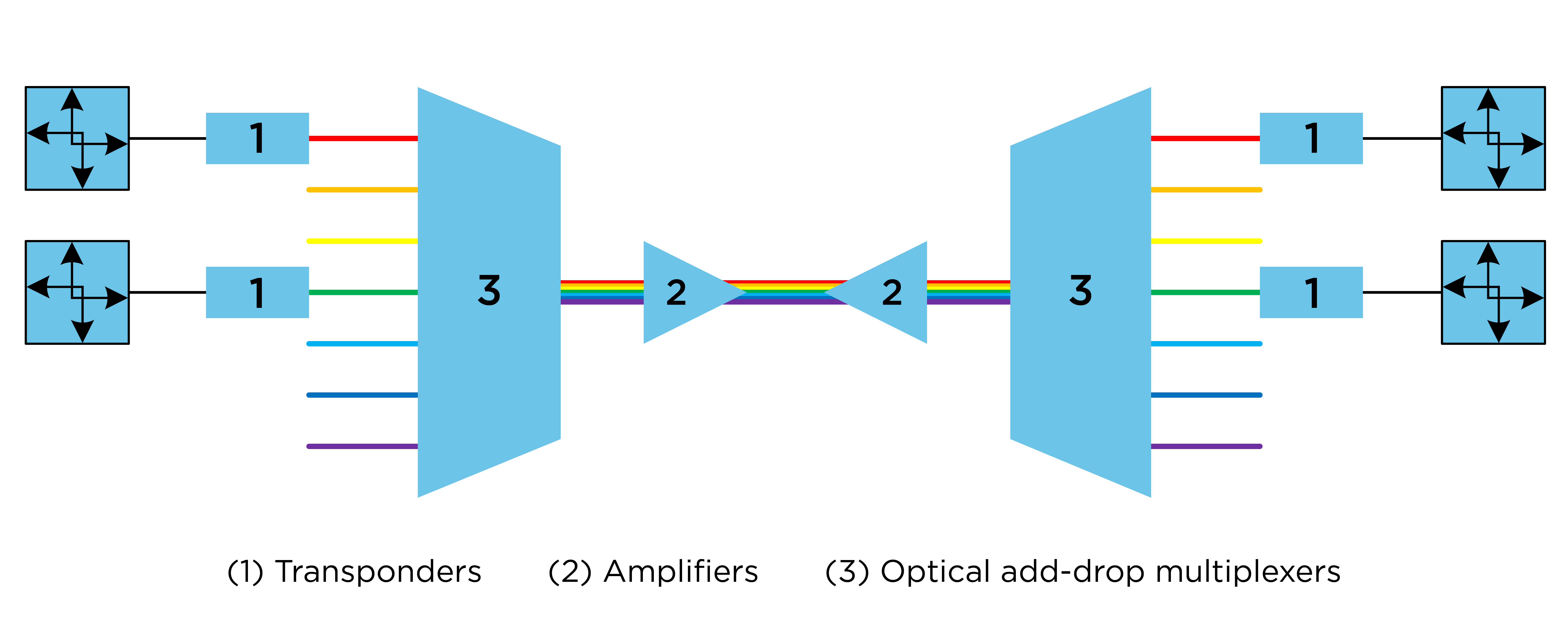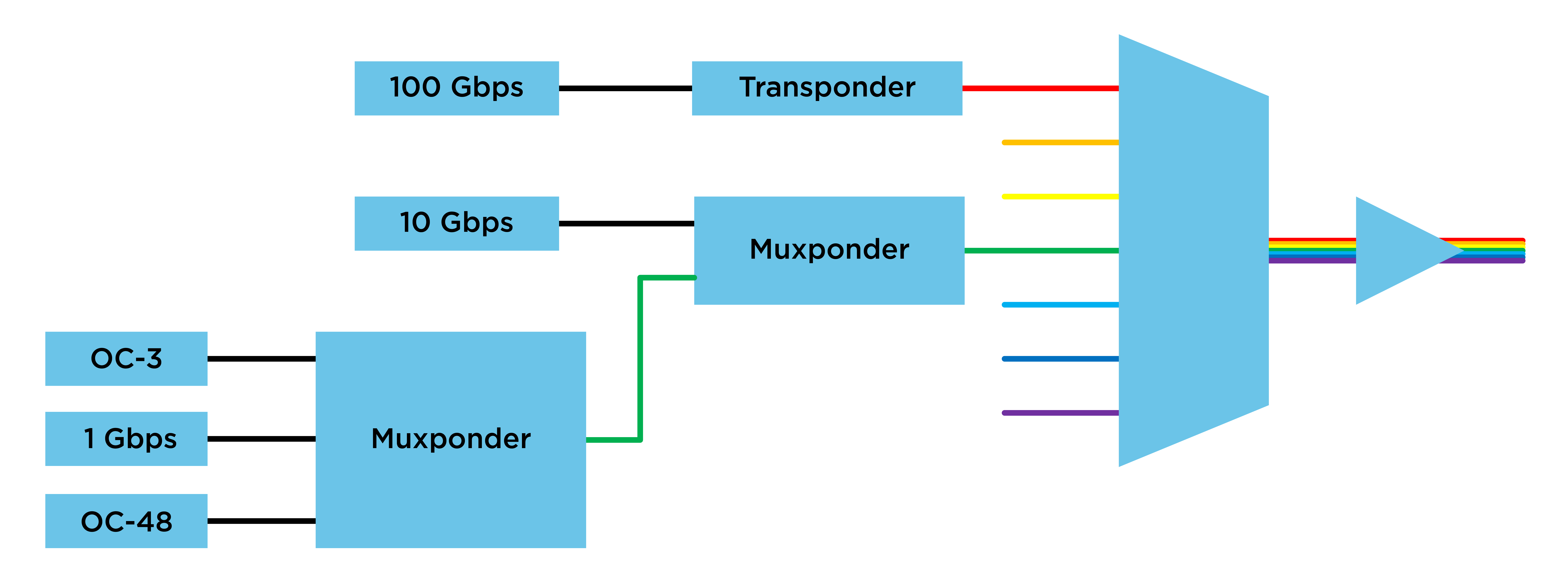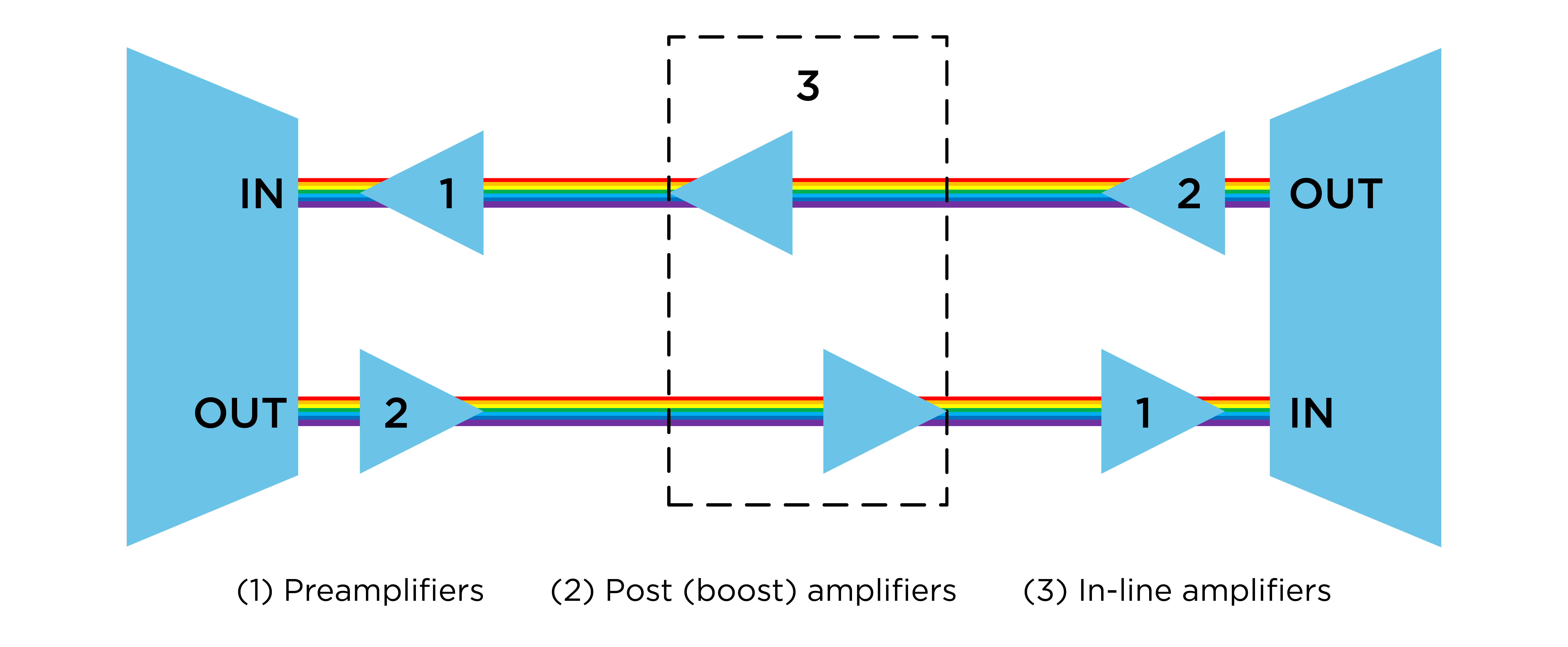Transponders
Transponders change the input wavelength of a received optical signal to an output wavelength that is appropriate for DWDM applications.
A DWDM system needs to convert conventional wideband gray optical signals into the colored optical signals of the DWDM domain. Signals in the DWDM domain are also referred to as wavelengths, lambdas or channels. A gray optical signal centered around a common wavelength — such as 850 nm, 1310 nm, or 1550 nm — is converted into a colored signal. The colored signal has a wavelength centered around a different frequency tuned to operate using a much narrower “dense” channel of optical spectrum.
The conversion of an optical signal allows multiple signals from end devices to be received at the same wavelength, such as 1310 nm, and multiplexed together as separate wavelengths on a single fiber. The incoming signals — such as OC-48 SONET, OC-3 SONET, 10 Gbps Ethernet and 1 Gbps Ethernet — are then transmitted across shared strands of fiber.
Transponder Capacity
DWDM systems allow for much greater capacity when compared to gray optics on a single pair of fiber. General trends for DWDM equipment move toward additional capacity and higher rate speeds without having to replace existing technology. Manufacturers often highlight methods to maximize throughput by more efficiently using available optical spectrum or expanding into additional spectral bands. The motivation for these methods is often intended for a scale that is beyond the needs of a utility operations network. Standard DWDM methods using fixed applications and the conventional C-band can still scale to handle capacities of terabits per second.
Because large carriers drive the market for DWDM equipment, utilities that use DWDM in their operations network are affected by market trends of carriers. Manufacturer trends are to move support away from lower-speed interfaces in favor of spectrally efficient line rates such as 100 Gbps, 400 Gbps and 800 Gbps.
The sub-100 Gbps line rates, common in utility communications, can be multiplexed into a higher-speed DWDM signal. A transponder that takes in multiple lower-speed client connections and multiplexes them into a higher-speed line rate is known as a muxponder.
A muxponder can be used to map multiple OC-48 connections into a single 10 Gbps signal or multiple 10 Gbps Ethernet connections into a single 100 Gbps. Muxponders can also be cascaded to feed lower-speed signals into higher-speed line signals as seen in Figure 3. Common 1 Gbps and OC-3 signals can be multiplexed into a 10 Gbps signal and multiplexed again into a 100 Gbps signal. Using this method, lower-speed circuits can still seamlessly use equipment designed for higher-speed circuits more commonly found outside of the utility industry.







